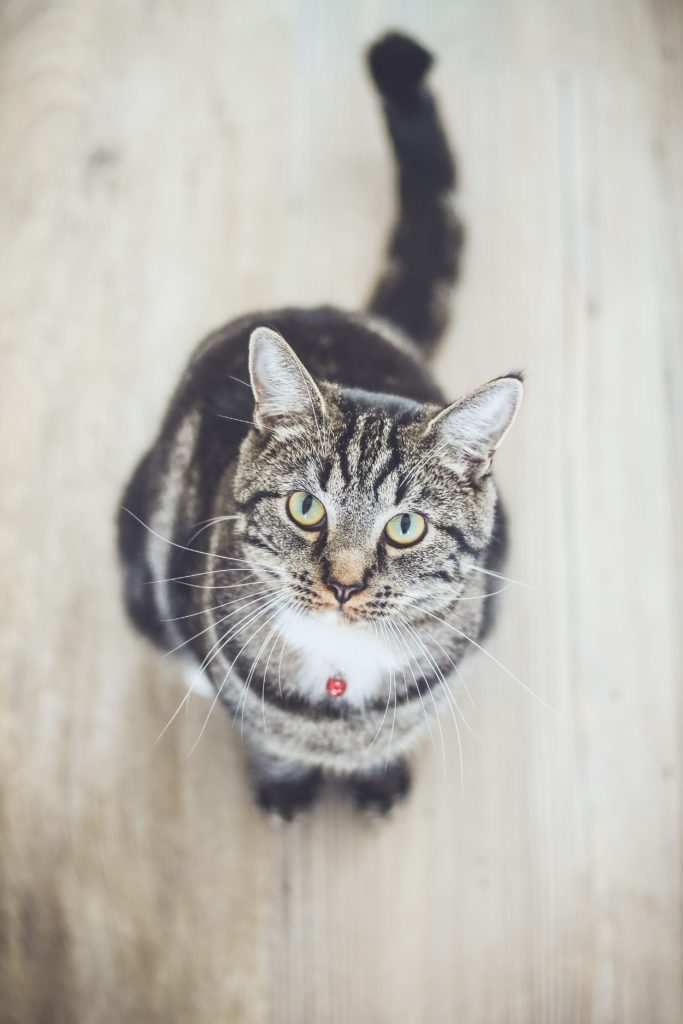 Does your cat claw up your curtains? Scratch your doors? Completely destroy your window screens, the edges of your couch, and your carpets? Well, there’s a good reason for that: cats scratch. When they play, they scratch. When they fight, they scratch. When they stretch, they scratch… you get the idea. It’s a natural, healthy behavior. But when it tears your home to shreds, it’s time to act. How can you make sure your cat scratches – appropriately?
Does your cat claw up your curtains? Scratch your doors? Completely destroy your window screens, the edges of your couch, and your carpets? Well, there’s a good reason for that: cats scratch. When they play, they scratch. When they fight, they scratch. When they stretch, they scratch… you get the idea. It’s a natural, healthy behavior. But when it tears your home to shreds, it’s time to act. How can you make sure your cat scratches – appropriately?
Hey, Instead of My Drapes, Try This!
Because scratching is such an essential part of cat behavior and health (they need to scratch to remove old, frayed claws, for instance, and if your cat spends time outdoors, she needs sharp claws for defense), the goal is not to stop it altogether. Instead, you want to stop it from ruining your furniture and upholstery. How?
Redirect her attention. Teach her that your favorite chair is off limits – but this nice scratching post is perfectly fine. Cats like to dig their claws into a variety of surfaces, including:
- Posts covered with sisal (a tough, natural fiber) or upholstery.
- Cardboard. What you can do with a little recycling, hot glue, and some time! When you’re sitting down to catch up on your DVR after a long day at work, make a cardboard scratching post. Cats love the corrugated surfaces. You can find great DIY ideas all over the internet.
Your cat may prefer one material over another, and she may want it to be positioned vertically or horizontally. Through some trial and error (which is why DIY is such a good idea), you can figure out exactly what she wants to scratch.
Once you do:
- Invest either your time on a trip to the pet supply store and give her a few options. Place scratching posts in various locations around your home.
- Make sure they are sturdy. If your cat falls over trying to scratch, she’ll just go back to your couch. Likewise, make sure they’re at a height that allows her to stretch fully. Cats stretch for exercise – sort of like yoga! – so make it as enticing as possible.
- Place the scratching posts in places that she normally frequents, and attract her attention with a bit of catnip.
- If your cat loves to scratch a particular “off-limits” spot, put one of these posts nearby. Prompt her to play there (bribery with catnip and treats is not only acceptable, it’s encouraged).
- If she persists in scratching your furniture, drapes, etc., try putting undesirable coverings on them. This could be double-sided tape, sandpaper, or a carpet runner (turned upside down with those hard little knobby parts pointing up) where your cat would stand to scratch.
What if, despite all your hard work hot gluing cardboard scratching posts, your cat lays into an inappropriate area? Clap loudly to startle her. If you need to, squirt her once with a bit of water. Now, be careful about this, and don’t do it often. You don’t want to teach her to be afraid of you. Positive actions, like redirecting her and giving her treats and praise work much more effectively. Just be patient. Cats are smart – and they do respond very well to food and attention.
Oh, and one more thing: when those great scratching posts start looking like something the cat dragged in? Resist the urge to toss them in the trash. Cats like shredded surfaces because they can dig their claws in – and they look and smell familiar and safe. Why mess with success, right?
Cats scratch. It’s a fact of pet ownership! But you can help teach her to scratch the right surfaces. She’ll be happy – and so will your couch!


